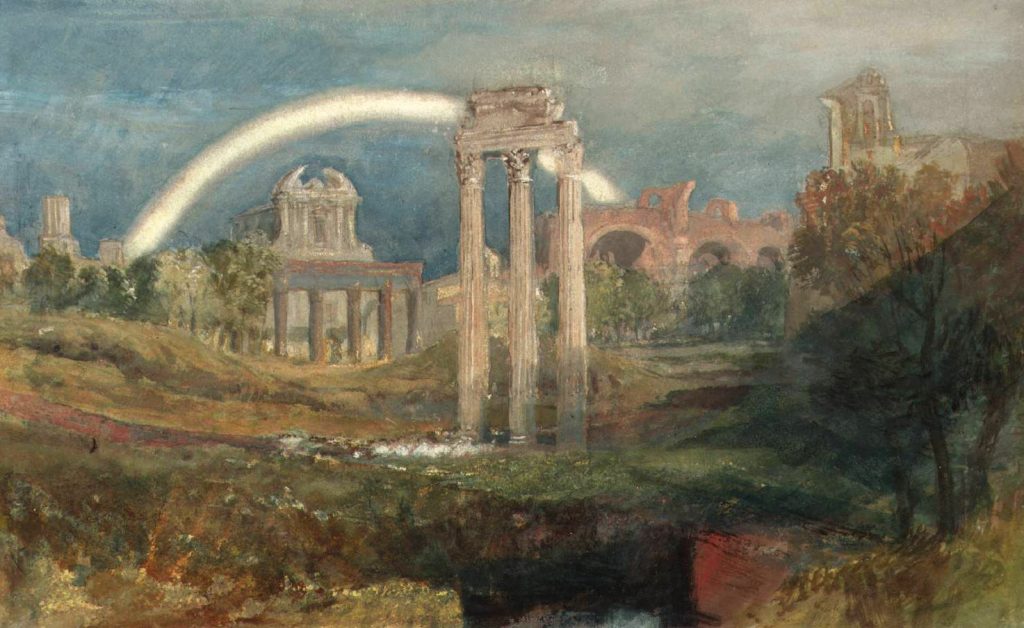
What did people think rainbows were, before science? It’s hard to imagine, considering the modern day symbolism of the rainbow, but some ancient societies believed rainbows to be bad omens. Indigenous Australians referred to the rainbow as the ‘Rainbow Serpent’. This ancient rock painting (below) was created sometime between 2,000 BC – 4,000 BC, and is likely to be the earliest art to depict the rainbow.
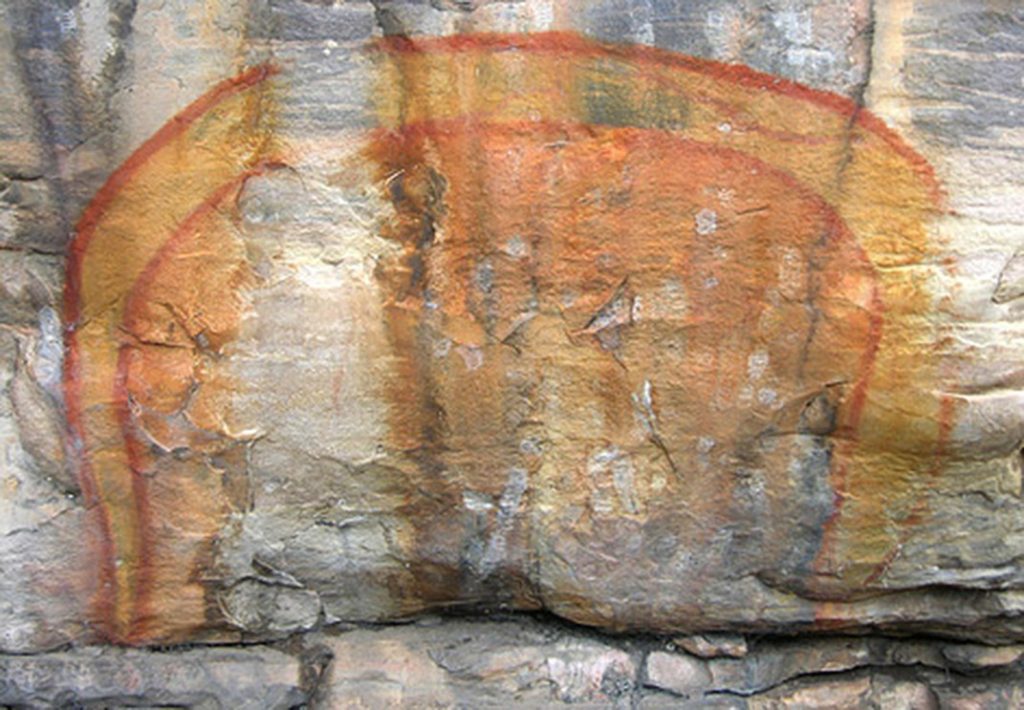
In Ancient Gabon, Honduras and Nicaragua, people feared the rainbow. Children were taught not to look at or point at a rainbow. For the Igbo people of Nigeria, the rainbow was an omen that an important person would die.
In Ancient Maya, the rainbow formed the crown of Ix Chel; the Mayan Goddess of the moon, water, weaving and childbirth. Like many Mayan gods, Ix Chel possessed a dual nature. She was sometimes presented as a fanged, clawed, crone, and associated with bad luck and disease.
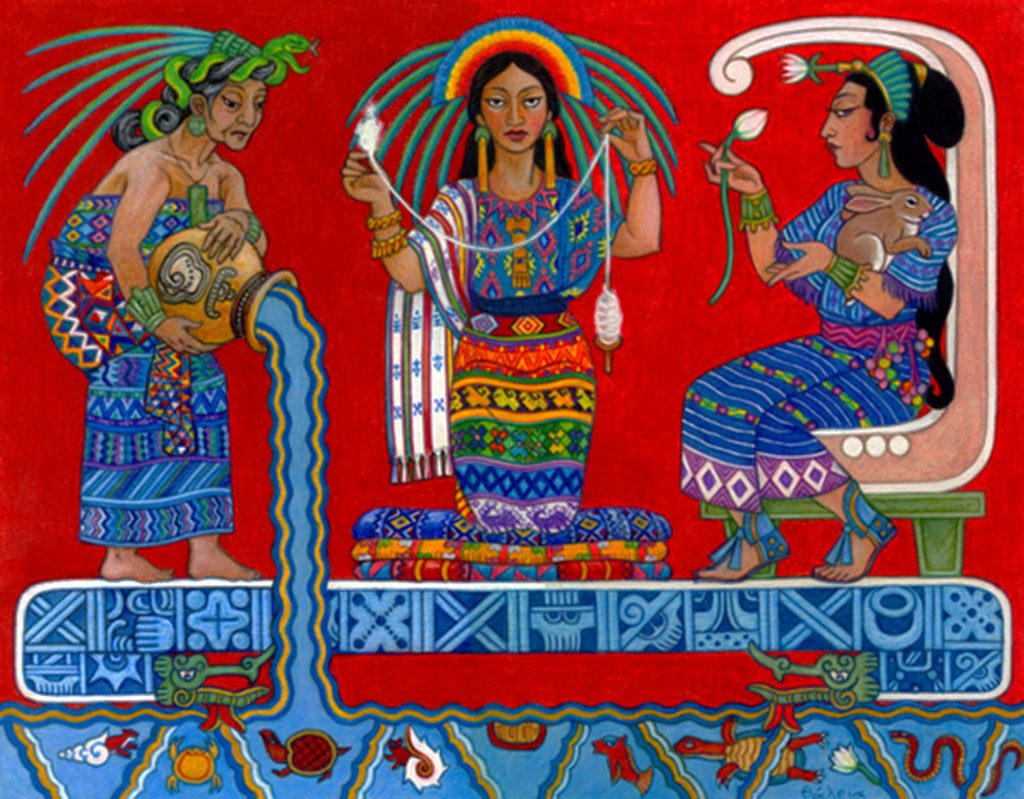
The rainbow as a bridge to the heavens
The Ancient Egyptians believed rainbows were a bridge to the heavens. In Japanese mythology, the rainbow was also seen as a bridge that the creators of the world used to descend from heavens.
In Norse mythology, the rainbow symbolised a bridge that connected mortals with Asgard- the home of the gods. It was known as the ‘Bifrost’ and could only be used by gods or warriors killed in battle. The Bifrost was eventually shattered under the weight of war – the Ragnarok.
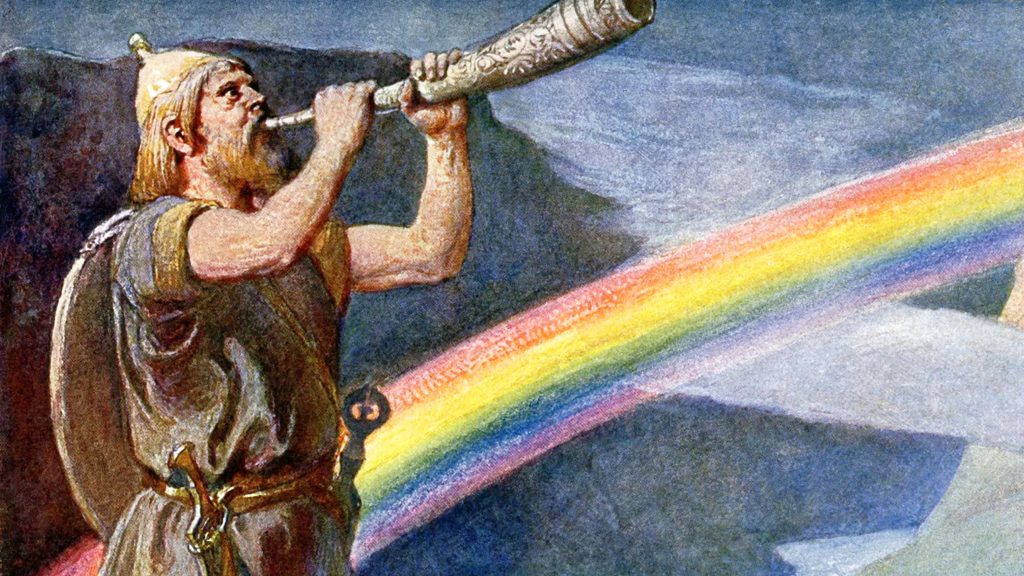
The Ancient Greeks and the Goddess Iris
The Ancient Greeks believed rainbows were a path created by Iris- the goddess of the rainbow. The Greek poet Homer believed rainbows consisted of a single colour- purple. The Greek philosopher Xenophanes however argued that the rainbow had 3 colours; purple, yellow and crimson. Although it’s worth noting that the names and understanding of colours would have differed greatly to our modern understanding. Homer’s writings for example, didn’t have specific words for blue and green.
Aristotle was the first recorded person to attempt to describe how rainbows are formed. He suggested they were caused by the reflection of sunlight in the clouds, linking rainbows to the presence of water droplets in the atmosphere.
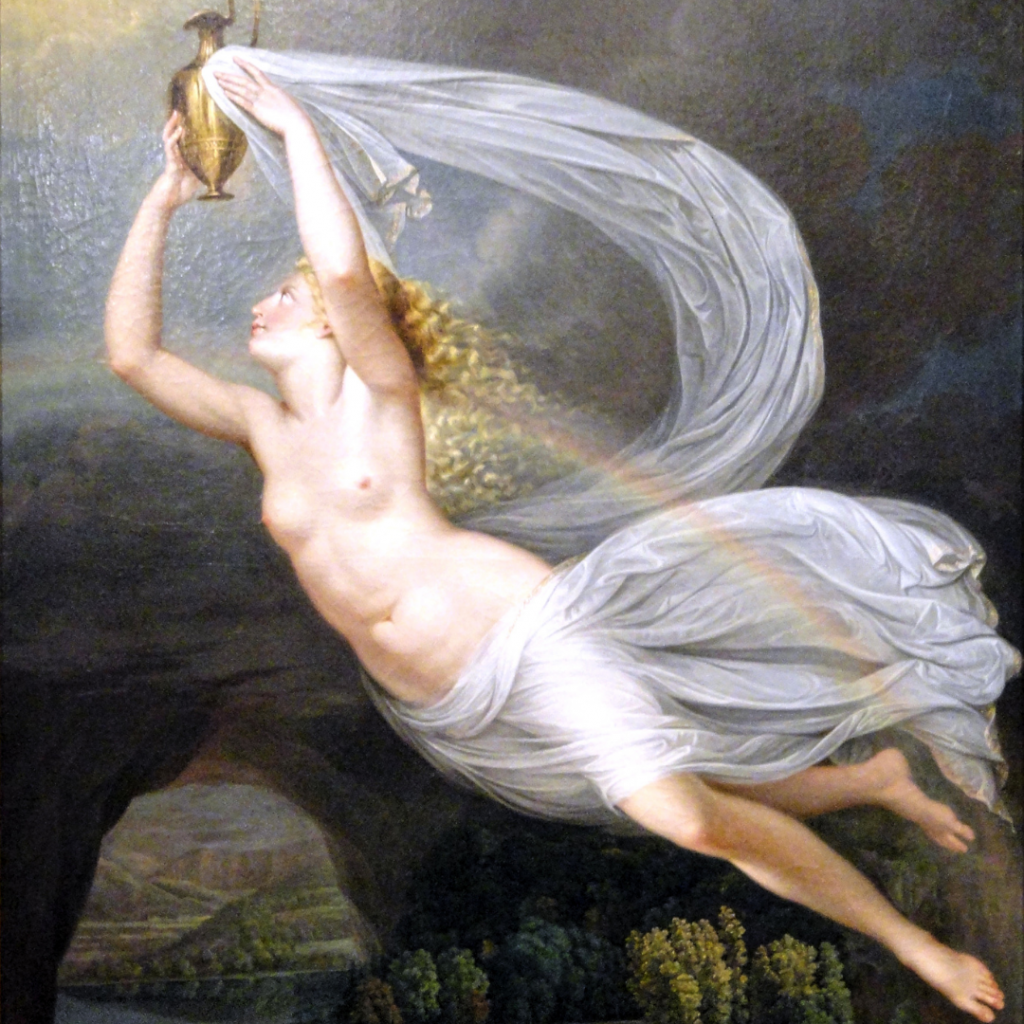
In Celtic mythology
To the Ancient Celts, the rainbow symbolised luck and fertility. The pot of gold at the end of the rainbow, left by the leprechaun, promised offspring and of dreams coming true.
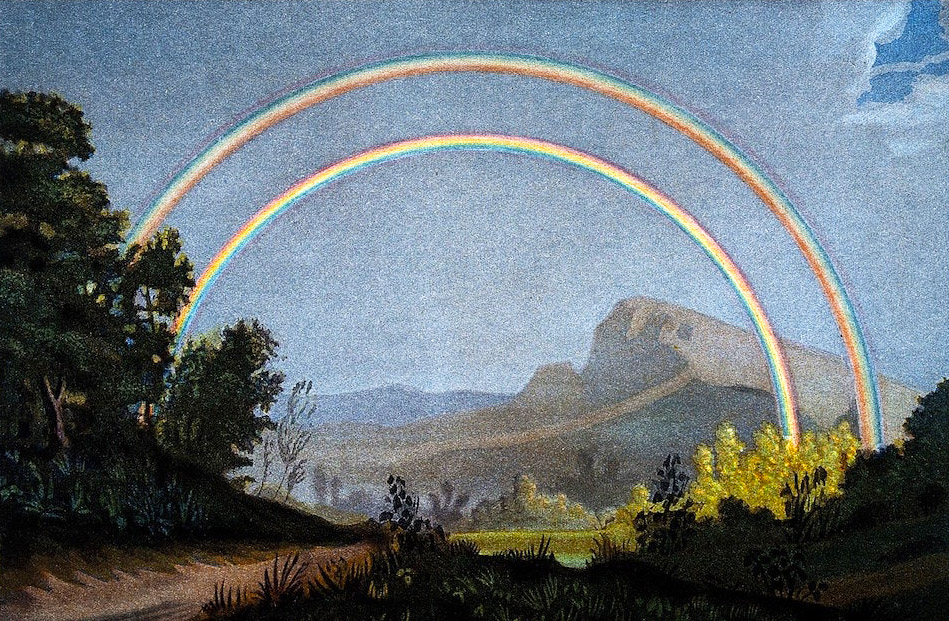
Science and the Law of Refraction
In 1637, the French philosopher, mathematician, and scientist René Descartes discovered that rainbows are caused by light from the sun being split into different colours by raindrops. His theory was similar to that of Dutchman Willibrord Snell, who had presented his Law of Refraction theory back in 1621 (that largely went undiscovered for many years).
In 1666, Sir Isaac Newton conducted his prism experiments and demonstrated how white light splits into colours. Our modern understanding of the rainbow was born!
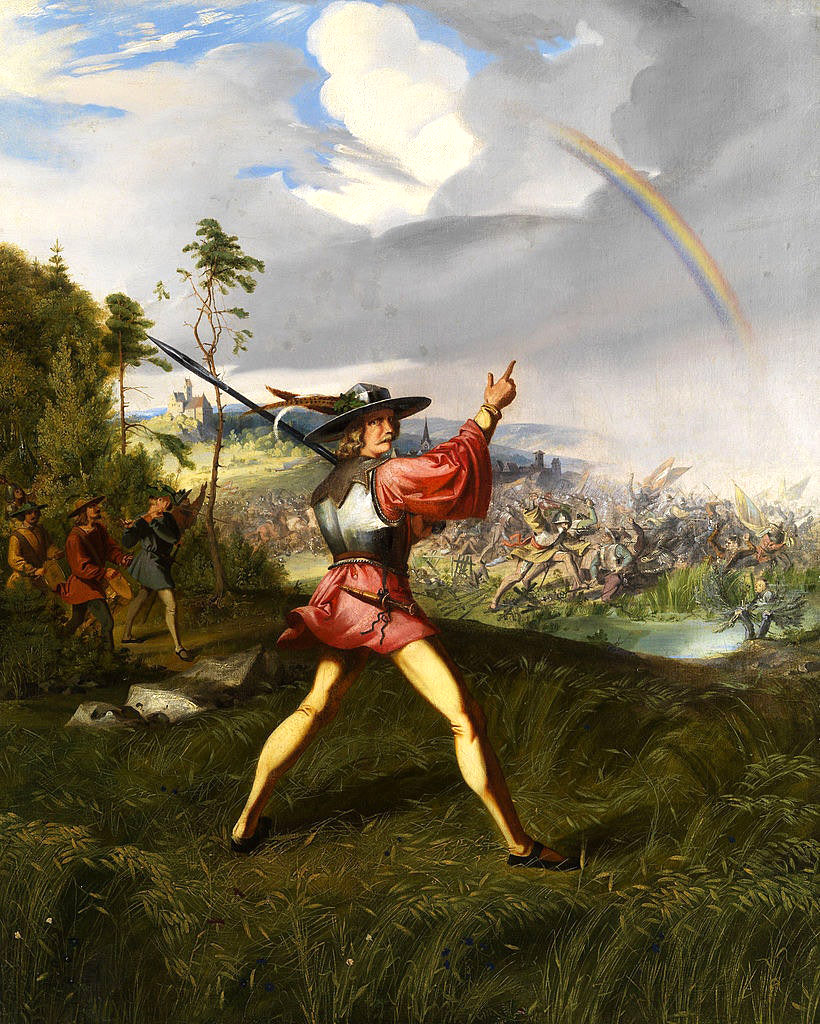


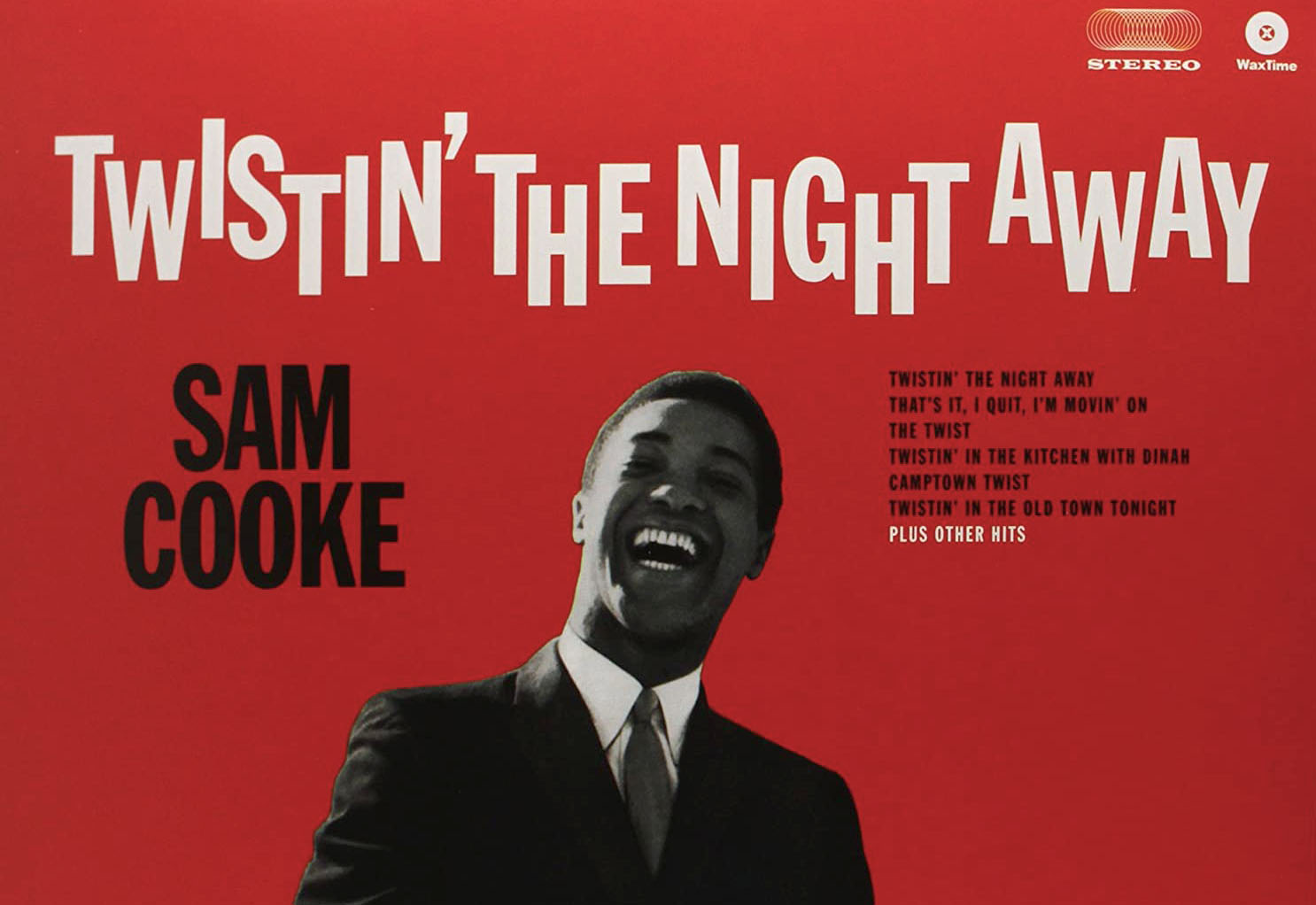
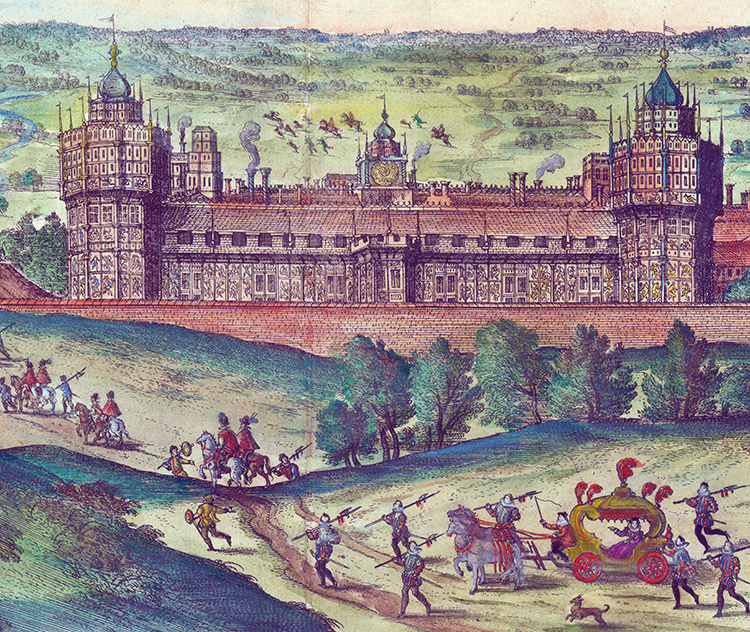
Leave a Reply